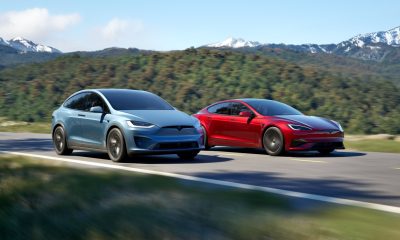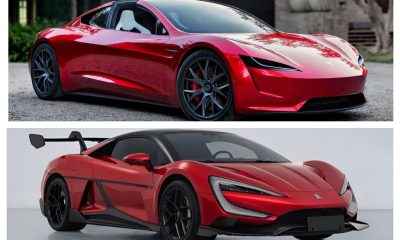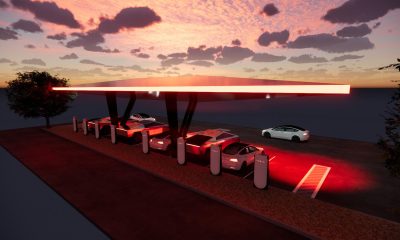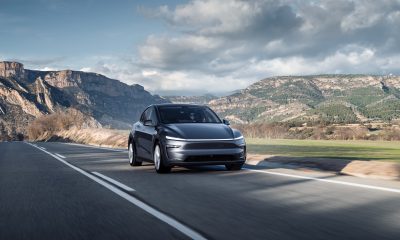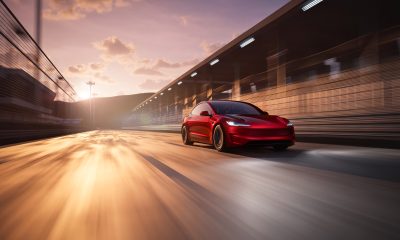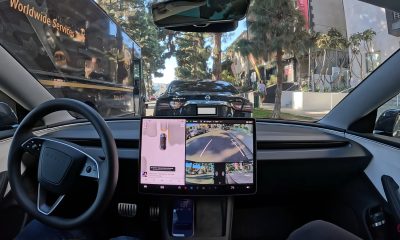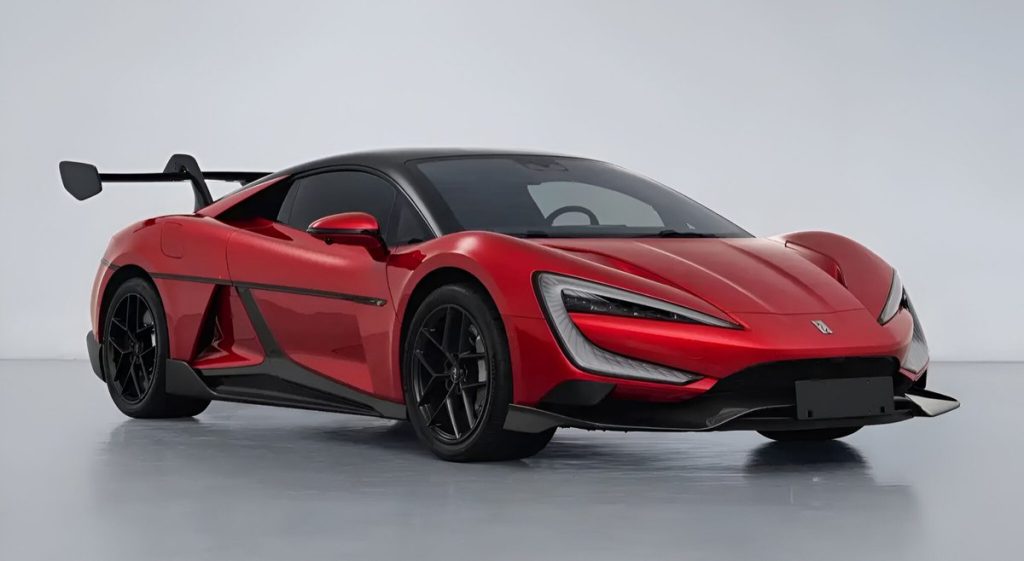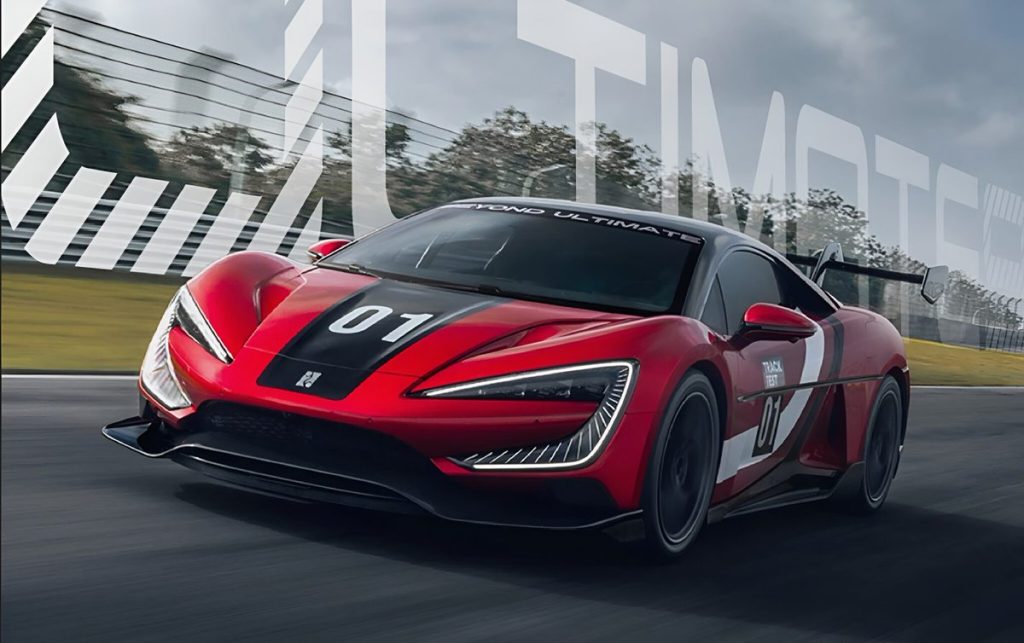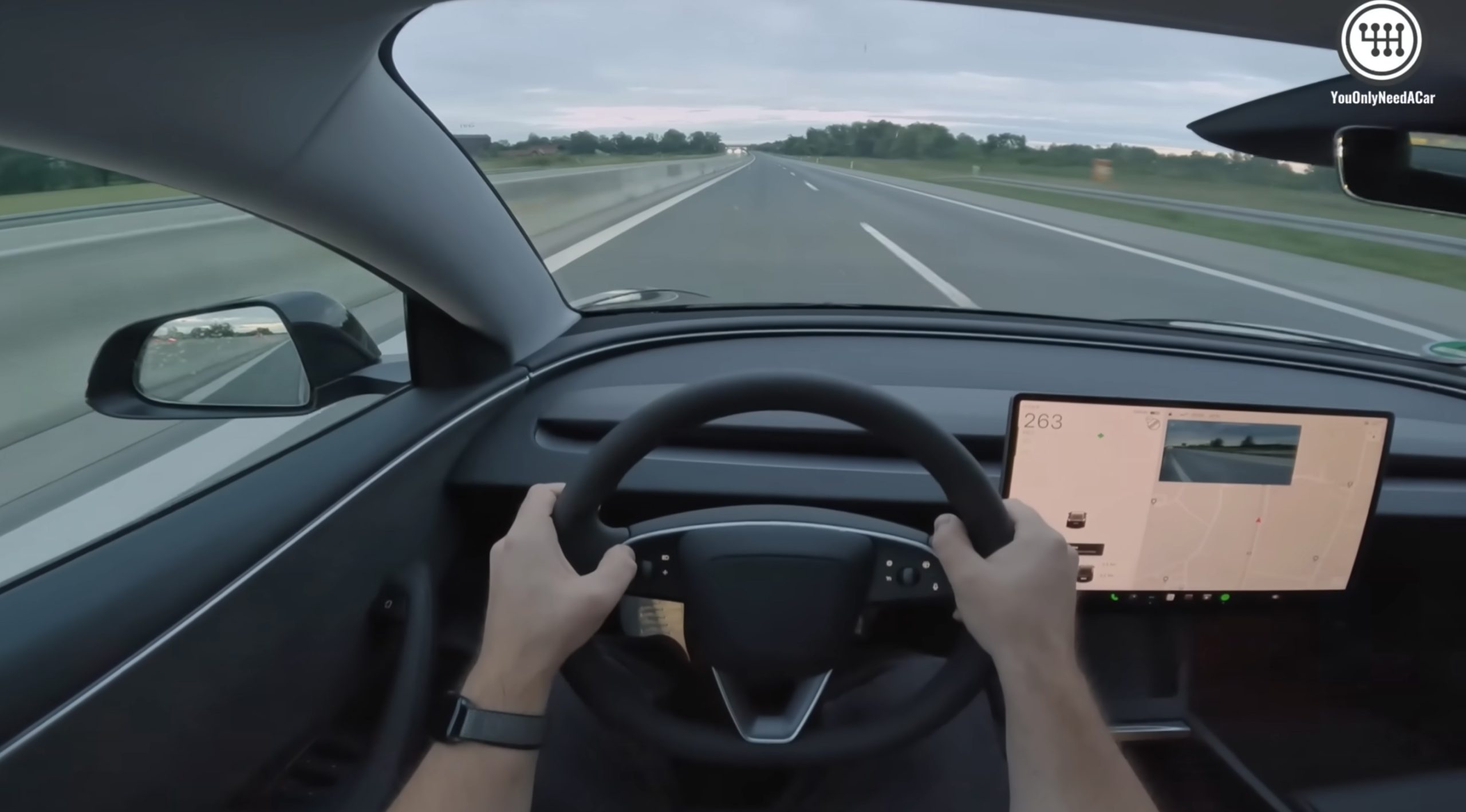
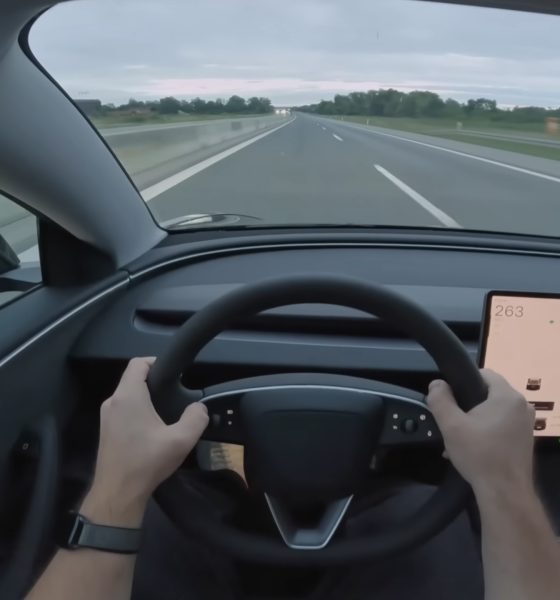
News
Reengineered Tesla Model 3 Performance looks stable and at home in top speed Autobahn run
The Tesla Model 3 Performance is not the fastest car in the electric vehicle maker’s lineup. The Model S Plaid, Model X Plaid, and the Cyberbeast could easily beat it when it comes to 0-60 mph times. But with a 0-60 mph time of 2.9 seconds and a top speed of 262 km/h (163 mph), the reengineered Tesla Model 3 Performance is no slouch.
And if a video from Germany is any indication, it would appear that the Tesla Model 3 Performance is also capable of sustaining very high speeds in a very proficient manner. The video was posted by the YouTube channel YouOnlyNeedACar, which typically tests vehicles on the Autobahn. Sections of the Autobahn do not have a speed limit, so the famous freeway is the perfect area for top speed runs.
As could be seen in the video, the reengineered Model 3 Performance reaches its top speed without any issues. And even at a speed of 263 km/h, the new Model 3 Performance looks at home on the Autobahn. The vehicle looked very stable as it sped through the highway, and it seemed planted on the ground even as the driver changed lanes at 263 km/h.
Casually cruising at the M3P’s 263km/h (163mph) top speed on the Autobahn. (LG)
Looks super stable. Germans are just built different! lol pic.twitter.com/9oYOvoJmKv— Nic Cruz Patane (@niccruzpatane) June 19, 2024
Overall, Tesla’s aero work on the new Model 3 Performance seems to have paid off in spades, as it helped create a vehicle that could only be described as one of the best bang for the buck performance cars in the market today, electric or otherwise. The Model 3, being the most affordable car in Tesla’s lineup, is already the perfect daily driver. The new Model 3 Performance just makes that daily driver far more exciting.
The driver of the Tesla Model 3 Performance shared some thoughts about the vehicle in the description of the YouTube video. As per the YouTube channel host, the feeling that the reengineered Model 3 Performance gives drivers as it accelerates is indescribable. The driver also praised the new Model 3’s interior and quality, which he noted was better than the previous generation of the vehicle.
Interestingly enough, the reengineered Model 3 Performance’s driver observed that the touch based gear turn signals on the steering wheel were actually not too bad, as he got used to them quickly. This was not the case with the vehicle’s touch-based gear selectors, as the driver noted that the system was quite annoying to use.
Watch the reengineered Tesla Model 3 Performance’s top speed Autobahn run in the video below.
Don’t hesitate to contact us with news tips. Just send a message to simon@teslarati.com to give us a heads up.
News
Tesla pushes crazy ‘Luxe’ incentive package on flagship Model S and X
Tesla is pushing more customers to the Model S and Model X with a new incentive package.
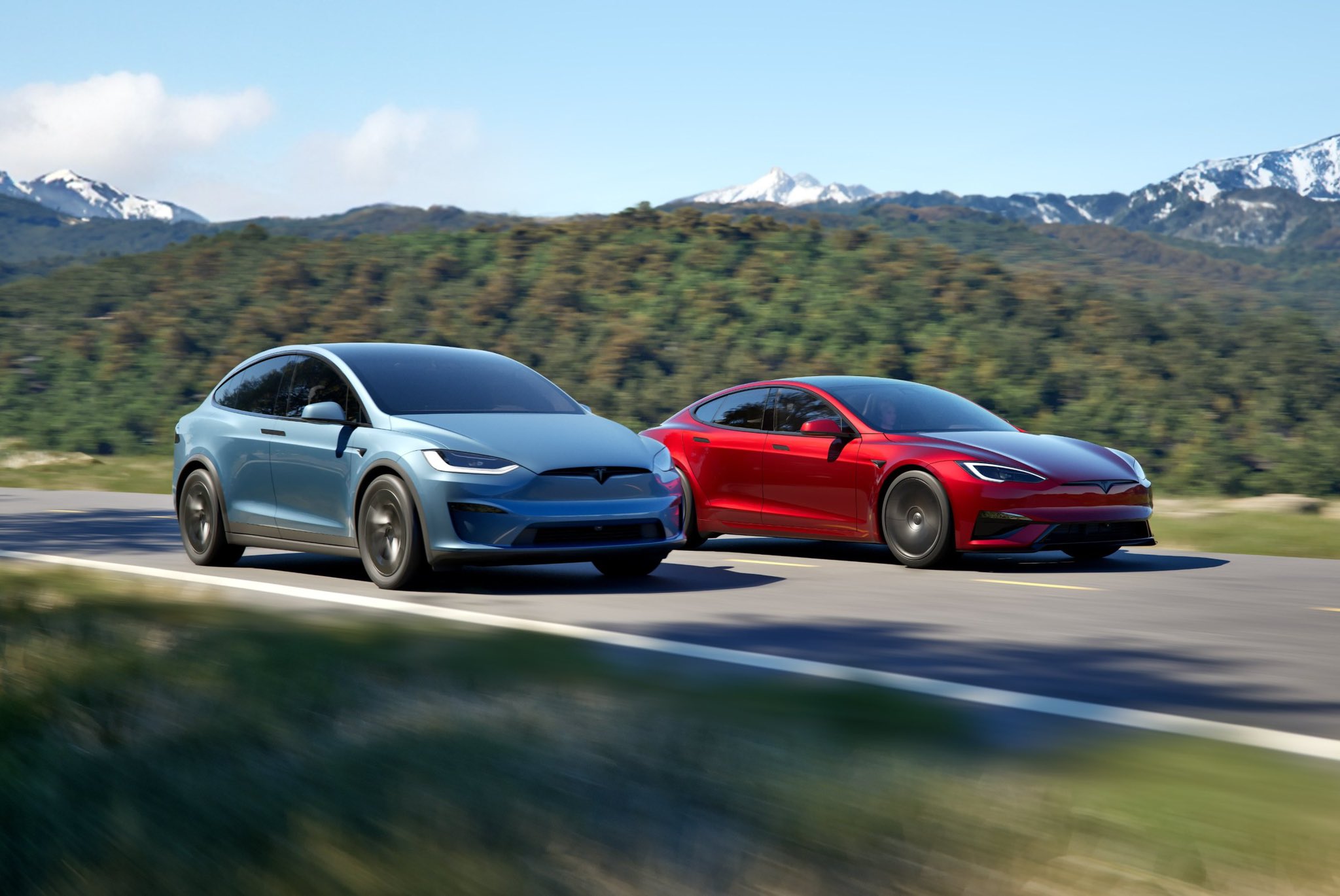
Tesla has pushed a crazy new incentive package, known as the “Luxe Package,” on the flagship Model S and Model X, along with a $10,000 price increase on each trim level.
The move aims to likely bolster margins for the company on the two cars while also giving those who choose to buy the Tesla lineup mainstays a variety of awesome advantages, including Free Supercharging, Full Self-Driving, and other add-ons.
Tesla is offering a crazy Supercharging incentive on its two ‘sentimental’ vehicles
Last night, Tesla launched the “Luxe Package” for the Model S and Model X, which includes the following four add-ons:
- Full Self-Driving (Supervised) – Your car will be able to drive itself almost anywhere with minimal driver intervention
- Four-Year Premium Service – Wheel and Tire Protection, Windshield Protection, and Recommended Maintenance
- Supercharging – Charge for free at 70,000+ Superchargers worldwide
- Premium Connectivity – Listen to music, stream movies, monitor live traffic, and more – no Wi-Fi needed
Full Self-Driving is priced at $8,000. Free Supercharging for the life of the car is between $10,000 and $15,000 over the life of the vehicle, although Tesla has valued it at $5,000 in recent promotions.
Free Premium Connectivity is roughly $1,000, and the four-year tire, wheel, windshield, and maintenance plan is about $3,200.
🚨 Tesla increased the price of both the Model S and Model X by $10,000, but both vehicles now include the “Luxe Package,” which includes:
-Full Self-Driving
-Four years of included maintenance, tire and wheel repairs, and windshield repairs/replacements
-Free lifetime… pic.twitter.com/LKv7rXruml— TESLARATI (@Teslarati) August 16, 2025
In all, the value is over $25,000, but this is loosely based on usage.
The Model S and Model X are low contributors to Tesla’s overall sales figures, as they make up less than five percent of sales from a quarterly perspective and have for some time.
As they are certainly the luxury choices in Tesla’s lineup, the Model 3 and Model Y are the bigger focus for the company, as a significantly larger portion of the company’s sales is made up of those vehicles.
The Luxe Package is an especially good idea for those who drive high-mileage and plan to use the Model S or Model X for commuting or long drives. The free Supercharging makes the deal worth it on its own.
As for the price bumps, each of the vehicles are now priced as follows:
- Model S All-Wheel-Drive: $94,990
- Model S Plaid: $109,990
- Model X All-Wheel-Drive: $99,990
- Model X Plaid: $114,990
News
Tesla Roadster could have a formidable competitor with BYD’s 3000-HP supercar
The Roadster is one of the most anticipated vehicles of all time, especially because we’ve all had to wait so long for it. On its own, it will have a 1.9-second 0-60 MPH acceleration rate, which is projected to be better than the 2.3 seconds the U9 Track Edition will offer.
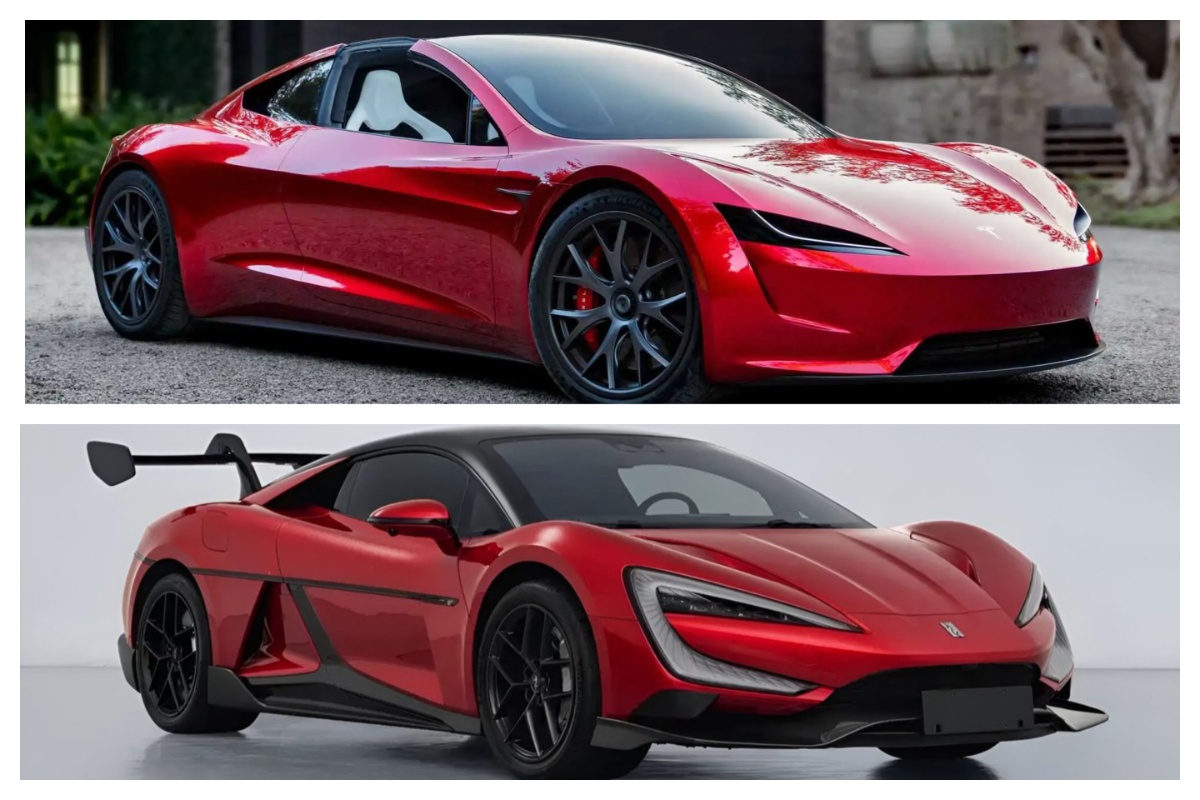
The Tesla Roadster is on the way, and yes, we know we’ve heard that for quite a few years. But when it comes, it might have a formidable competitor, and it might come from no one other than Chinese rival BYD.
BYD’s Yangwang U9 Track Edition is a new configuration of the U9 supercar that hit the Chinese Ministry of Information Technology (MIIT) database recently.
The vehicle was first spotted on the MIIT database by CarNewsChina. It will have a quad-motor powertrain, each dedicated to one wheel. Instead of the 1,287 horsepower that comes with the standard U9 configuration, the Track Edition will have 2,977.
There are only two cars that even come close in terms of horsepower: the Lotus Evija with 1,972 and the Rimac Nevera at 1,914 horsepower. The Tesla Roadster is expected to have somewhere around 1,000 horsepower.
The Roadster is one of the most anticipated vehicles of all time, especially because we’ve all had to wait so long for it. On its own, it will have a 1.9-second 0-60 MPH acceleration rate (without the SpaceX package, which brings the projection to 1.1 seconds), which is projected to be better than the 2.3 seconds the U9 Track Edition will offer.
The Roadster also beats the U9 Track Edition in projected top speed and range. The Roadster could top out at over 250 MPH, compared to the 217 conservative projection for the U9 Track Edition.
Range on the Roadster is 620 miles, beating 280 miles for the BYD.
- Credit: BYD
- Credit: BYD
The U9 Track Edition will also have some additional features compared to its base model. These include some aerodynamic additions, like a carbon fiber rear wing, diffuser, and an adjustable front splitter and adjustable rear wing.
The latter two are optional, but if you have enough scratch to drop on this car, you’re probably adding those two features as well.
We hope that both the Roadster and U9 Track Edition will hit a drag strip, road course, or even a superspeedway for some racing. It would truly be something for EV fans to drool over.
News
Tesla is breaking even its own rules to cap off an intense Q3
Tesla is pulling out all the stops to have a strong Q3 as the EV tax credit will phase out.
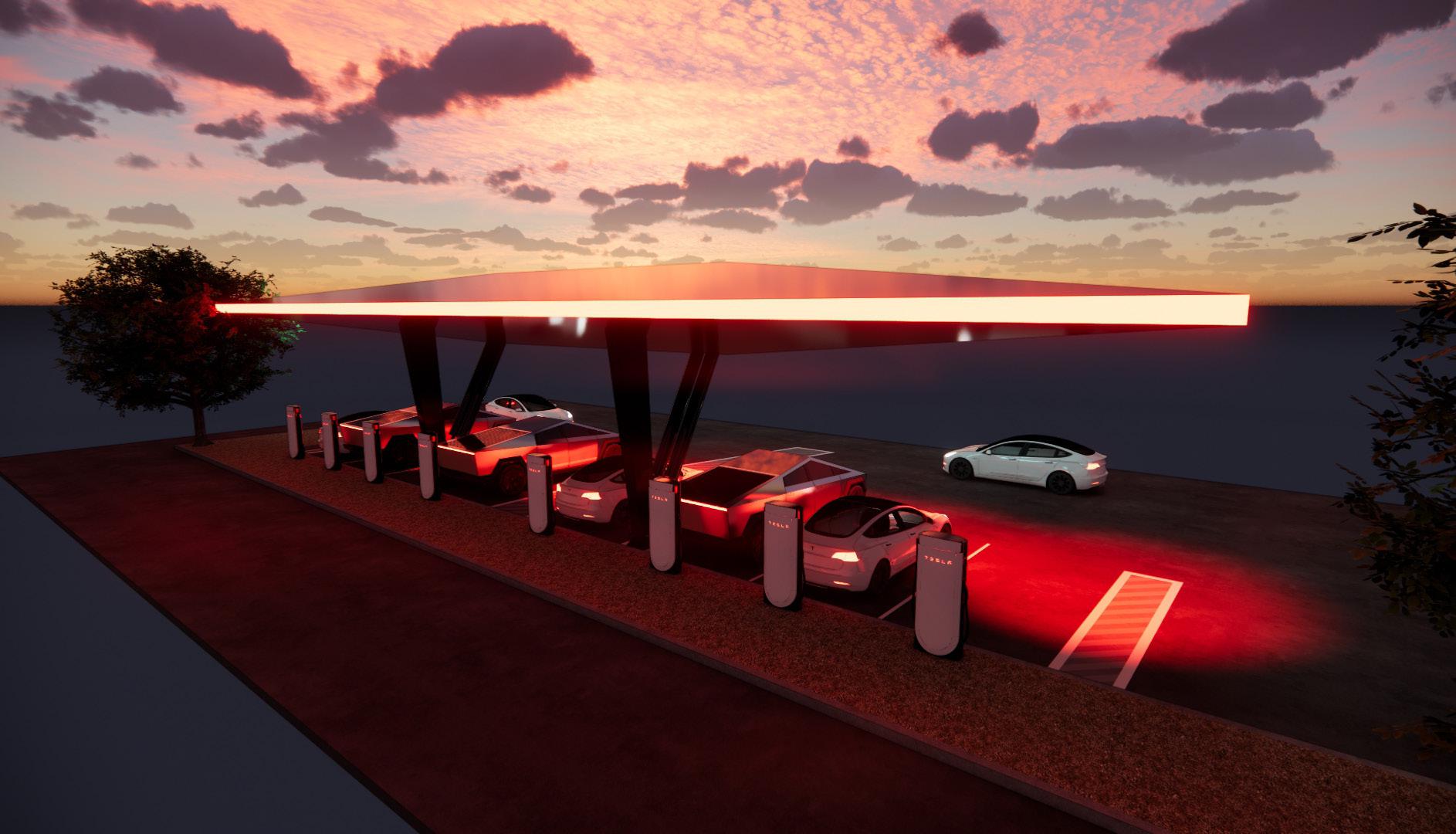
Tesla is breaking its own rules by advertising on various platforms in an effort to sell as many cars as possible before the end of the $7,500 electric vehicle tax credit.
Tesla has had a very polarizing perspective on advertising. Over the years, it has taken on different attitudes toward spending any money on marketing. It has instead put those dollars into research and development to make its vehicles more advanced.
Back in 2019, Tesla CEO Elon Musk talked about the company advertising its vehicles and energy products:
Tesla does not advertise or pay for endorsements. Instead, we use that money to make the product great. https://t.co/SsrfOq1Xyc
— Elon Musk (@elonmusk) May 19, 2019
In 2021, in response to analyst Gary Black, who has pushed for Tesla to have a PR or marketing department, Musk said:
Other companies spend money on advertising & manipulating public opinion, Tesla focuses on the product.
I trust the people.
— Elon Musk (@elonmusk) April 27, 2021
However, this did not hold as Tesla’s strategy for the long haul. While Musk did resist advertising for a long time, Tesla started placing ads on platforms like X, Google, and YouTube several years back. It’s pretty rare that Tesla pushes these ads, however.
Tesla launches advertising on X in the U.S., expanding ‘small scale’ strategy outlined by Musk
The company’s stance on setting aside capital for advertising seems to be circumstantial. Right now, it is working to sell as many vehicles as it can before the tax credit comes to a close.
As a result, it is pushing some ads on YouTube:
$TSLA is starting to advertise on YouTube. pic.twitter.com/1cwO2KNzJm
— Cole Grinde (@GrindeOptions) August 15, 2025
It’s a move that makes sense considering the timing. With just six weeks roughly left in the quarter, Tesla is going to work tirelessly to push as many cars into customer hands as possible. It will use every ounce of effort to get its products on people’s screens.
Tesla counters jab at lack of advertising with perfect response
Throw in one of the many incentives it is offering currently, and there will surely be some takers.
-
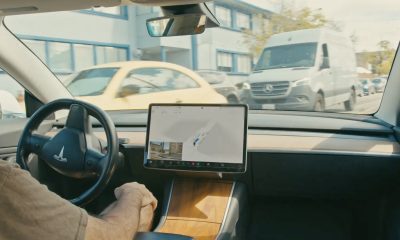
 Elon Musk1 week ago
Elon Musk1 week agoElon Musk teases crazy new Tesla FSD model: here’s when it’s coming
-

 Elon Musk1 week ago
Elon Musk1 week agoElon Musk confirms Tesla AI6 chip is Project Dojo’s successor
-
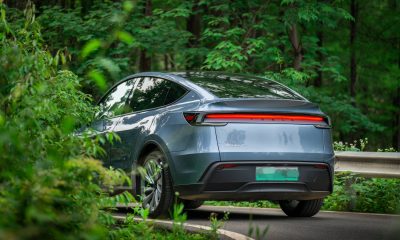
 News1 week ago
News1 week agoTesla Model Y L reportedly entered mass production in Giga Shanghai
-
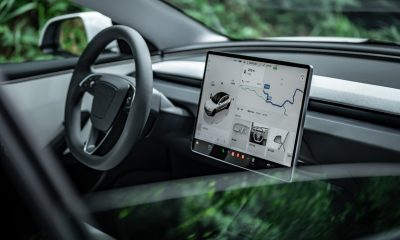
 Elon Musk1 week ago
Elon Musk1 week agoTesla CEO Elon Musk details massive FSD update set for September release
-
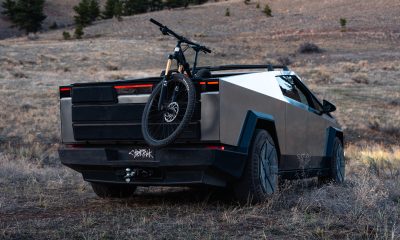
 Cybertruck1 week ago
Cybertruck1 week agoTesla’s new upgrade makes the Cybertruck extra-terrestrial
-
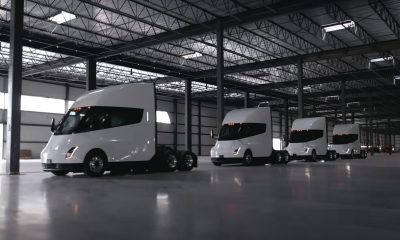
 News5 days ago
News5 days agoElon Musk reaffirms Tesla Semi mass production in 2026
-
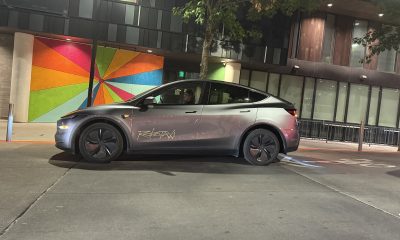
 Elon Musk2 weeks ago
Elon Musk2 weeks agoTesla ‘activist shareholders’ sue company and Elon Musk for Robotaxi rollout
-
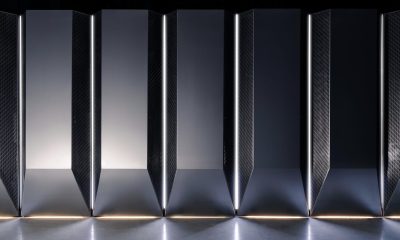
 News1 week ago
News1 week agoElon Musk explains why Tesla stepped back from Project Dojo


